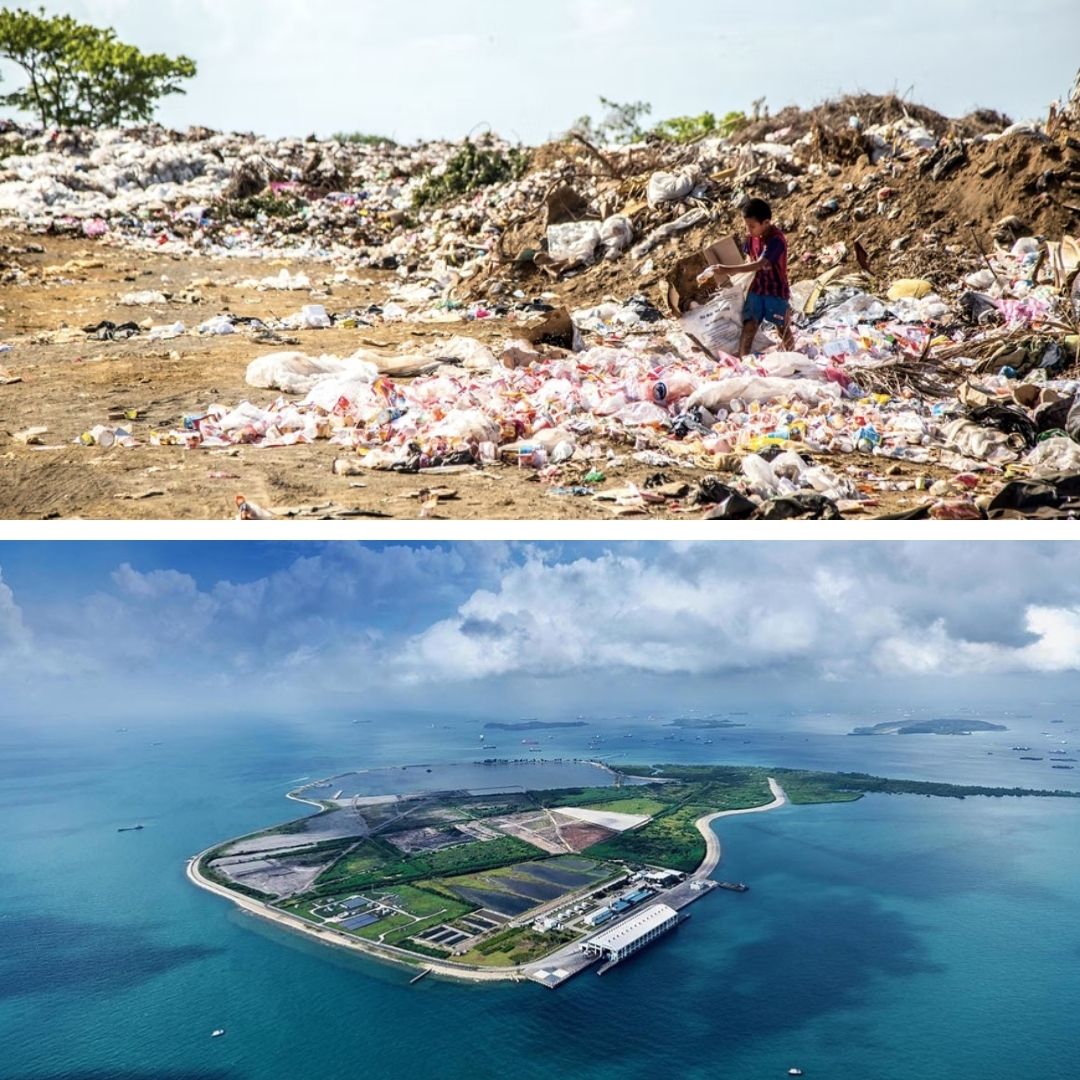
Image Credits: Unsplash, Singapore Govt
How Singapore Has Fixed Its Garbage Problem Over Years Is A Lesson For The World
Others/World, 12 April 2022 5:14 AM GMT
Editor : Shiva Chaudhary |
A post-graduate in Journalism and Mass Communication with relevant skills, specialising in content editing & writing. I believe in the precise dissemination of information based on facts to the public.
Creatives : Tashafi Nazir
For most people, journalism sounds hectic and chaotic. For her, it's a passion she has been chasing for years. With an extensive media background, Tashafi believes in putting efforts on presenting a simple incident in the most interesting way.
In Singapore, about 930 million kg of plastic waste is discarded every year with 96 per cent of them being non-recyclable. Over the years, the country has found an easy way to solve this problem and it does not take much space.
Waste management is part of our daily lives and is one of the biggest growing challenges people face as a country that is getting more serious with each passing year. It is increasingly getting more complex and with societal changes impact people's lifestyles in general across the globe.
Singapore, which is considered one of the cleanest countries globally, is no different when it comes to the challenges of managing its waste. The country's increasing population and booming economy have contributed to about a seven-fold increase in the amount of solid waste disposed of from 1,260 tonnes a day in 1970 to a peak of 8,559 tonnes a day in 2016.
In Singapore, more than 7.2 million tonnes of solid waste was generated in 2019 and of that amount, 2.95 million tonnes could not be recycled. About 930 million kg of plastic waste needs to be discarded every year, with 96% being non-recyclable. It was a huge amount of waste that needed to be managed and disposed of carefully and efficiently.
However, over the years, Singapore has found an easy way to solve this problem and it does not take much space. National Environment Agency (NEA) handles the waste management in Singapore and oversees it for all general and hazardous trash.
Before the waste is recycled or disposed of, it is collected – which is quite an arduous task considering the country has many neighbourhoods, estates and private residences that also need their trash collected. This task is handled by licensed general waste collectors (GWCs) that collect recyclables and waste from different parts of the country.
How Singapore Manages Waste?
According to a report published in Tech Talkers, Singapore's waste management process involves burning the trash and filtering the smoke. First, all of the waste is accumulated from all garbage bins and trash bags. Next, the waste is taken to an incineration plant to burn the trash. This temperature is over 1,000 degrees Celsius, which is hot enough to "eat " the fire. Nearly, all of the trash is burned, but a bit of ash remains. Then, this ash is transported to a water body that does not touch the ocean water, making it safe. Using this process, the country was able to make an actual "trash island" made from repeating deposits of ash. Surprisingly, the island is charming and clean. It can even sustain trees and other plants.
There are various other methods of getting rid of an area's trash. Generally, landfills are very costly in terms of space and money. Also, there is an option of recycling, but not all materials can be recycled (like polystyrene). The same applies to composting since only organic materials like food and tree scraps can be composted. Out of these methods, incineration is considered to be the best. It can quickly get rid of the trash through burning, and little wait is needed.
The only drawbacks are the toxic gases and the ash that is left over. However, Singapore was able to overcome these problems too. The harmful gases are filtered out, so the air emitted from the incineration plants is very clean. In addition, the ash is dumped in the water of the artificial island, which does not touch ocean waters, therefore making no detrimental effect. Surprisingly, this solution offers an additional benefit: the heat from the burned waste is then harnessed to power thousands of houses with electricity, all from incineration plants.
People Participation
People in Singapore directly contribute to waste generation and have a part to play in reducing trash for a cleaner and greener country. They practise the 3 Rs i.e., Reduce, Reuse and Recycle.
NEA's National Recycling Programme is the most well-known and ensures every Housing & Development Board (HDB) estate, private condo and landed property can access recycling bins and recycling collection services.
The iconic blue bin is one of the most popular and accessible avenues anyone can start recycling their paper, plastic and glass trash.
Reward For Recycling
Want to get rewarded while doing your part? Thankfully, one can in Singapore! The country has 50 intelligent reverse vending machines that give attractive rewards for doing their part in recycling.
Some of the rewards include FairPrice discount coupons, STAR$ that can be redeemed for eCapitaVouchers and used in Capital and Malls, activeSG credits that can be used for gym memberships and fitness programmes at ActiveSG facilities.
Road Map For Other Countries
It costs $50 to send a ton of waste to the landfill and $65 to $75 to incinerate it. From this data, it may seem that landfill is a better choice. However, landfills require more maintenance, which can also cost a lot of money. But with incineration, it just has to be dumped into safe water, which is very cost-friendly. Even though it may take some initial investment to build an incineration facility, it would most likely cost a similar amount as landfills in the long run.
Many factors impact the environment, and choosing a reliable method of emptying fuel is crucial for improving the world's condition. Ideally, there should be few leftovers left from all waste. The method of trash disposal should be cost-effective and have a slight environmental impact.
Incinerating the trash and filtering the smoke is an excellent way to meet these requirements. Also, the heat can be harnessed, giving electricity to power many homes. Soon, the amount of waste will grow exponentially, producing a great need for a reliable technique for getting rid of the trash, and Singapore's solution might be a viable option for the rest of the world.
Also Read: Chennai IT Firm Gifts BMW Cars Worth Rs 1 Crore Each To Employees For Their Loyalty, Commitment
 All section
All section














